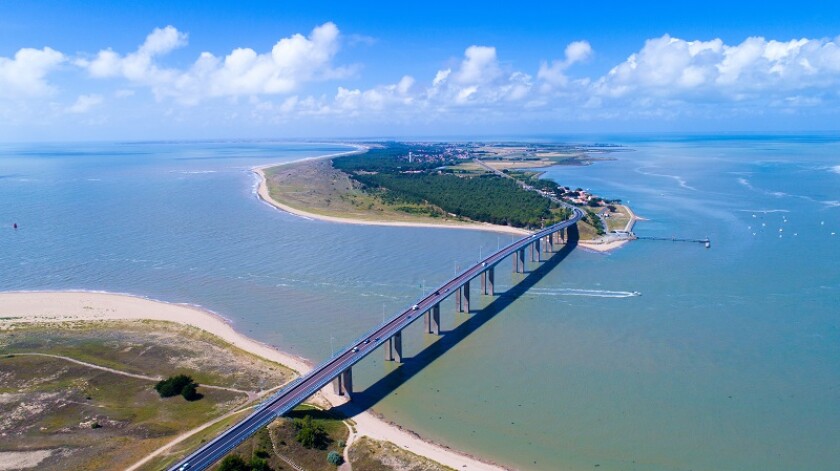Driss Bererhi, Allen & Overy
SECTION 1: Market overview
1.1 Please provide an overview of the project finance market in your jurisdiction.
Project finance market is currently very active in France and it covers the following main areas:
1. Greenfield projects, in certain specific sectors (telecom/very high-speed networks, renewable energy/offshore wind projects and social infrastructure such as universities and schools). The greenfield market (development of new projects) was very active between 2004 and 2013. After a short slowdown it is now concentrated on specific areas generally supported by governmental initiatives (including the very high-speed telecom plan (see below), French university and schools plan, and offshore wind farm projects).
2. Refinancing projects including highways and public private project (PPP) refinancing. Most of the projects launched a few years ago are now in a refinancing phase. This concerns mainly motorways, as most of these assets where initially financed through mini-perm schemes (short-term financing with bullet repayment) and sponsors are now looking to long-term refinancing. In 2016 and 2017, the A63, A28, A41, A355, A19 and A150 motorways were refinanced. Other motorway refinancings, such as for the A88, could be launched in 2018. It also concerns social and transport PPP infrastructures.
An important number of PPPs have been launched since 2004 and refinancing these PPPs now may provide an important reduction of financing costs (given the low level of margins). The two major railway links structured through PPP schemes (CNM and BPL) were refinanced in December 2017, by way of renegotiation of margins. Most of the sponsors are currently considering refinancing other PPPs (including universities, prisons and other social infrastructures).
3. Brownfield projects including airport privatisations, port acquisitions and infrastructure asset acquisitions. Brownfield projects (acquisition of infrastructure assets) are mainly concentrated on the transport sectors (airports and ports) and strategic infrastructure/energy assets. After the privatisations of Toulouse, Nice and Lyon airports, the Bordeaux and Marseille airport privatisations should be launched soon. Other sales of strategic assets should also be launched in 2018.
Financing schemes
Current project finance schemes go from standard loans to complex structured finance, including project bonds (securitisations and/or bonds schemes). Securitisation is mainly used on PPPs while private placement bond financing is used either on PPPs or on refinancing projects.
1.2 What is the composition of the market in terms of the types of active lending institutions and has this been evolving?
The lending market is shared between three types of lending institutions. The commercial banks active in the infrastructure/energy markets are mainly French banks and foreign banks with an infrastructure focus. Debt funds are active mainly on refinancing or availability-based financing and include French and more recently, foreign insurers. The most active institutional lenders are the European Investment Bank (EIB) and the French Caisse des Dépôts et Consignations.
Commercial banks focus on short-term/mid-term/fronting financing while debt funds and institutional lenders are looking to provide long-term debt. Debt funds are more and more involved on project finance transactions.
1.3 Please describe any major current projects or initiatives that are influencing activity.
One of the most active sectors in France concerns telecom very high-speed networks. The French very high-speed broadband plan (France Très Haut Débit), which was launched by the French government recently, aims to connect the whole French territory by 2022, mostly by using the FTTH (fibre to the home) technology. This national plan mixes both public and private investments for an aggregate amount of approximately €20 billion.
This plan has boosted the market and recent achievements in France involve projects of all sizes, ranging from mega regional projects such as in Alsace (€620 million investment), Nord Pas de Calais (€730 million), Grand Est (€900 million) and Gironde regions, to mid-size projects, such as in Seine et Marne, Grand Lyon, Hérault and Var. They are mostly all financed through public subsidies, equity and/or external financing (commercial banks and/or debt funds or institutional banks). The EIB is also eligible to provide funding under the EU's Juncker investment plan and intervenes either through direct lending or refinancing options.
SECTION 2: Transaction structures
2.1 Please review some recent notable transactions involving your market and outline any interesting aspects in their structures.
Optical fibre deals
The Alsace optical fibre deal was financed in 2016 using a soft mini-perm structure supported by a group of five French commercial banks and an insurer. The EIB was also involved providing a refinancing option for part of the debt after construction. The remaining part of the financing needs is covered by equity and by public subsidies. The implementation of the first tranche of the project will lead to the connection of more than 370,000 households in 700 French municipalities by 2022. If the conditional tranche is implemented, 100,000 additional connections will be completed. This project paved the way for other significant projects of that type in other French regions such as in Nord Pas de Calais and more recently, in Grand Est, where closing occurred in August 2017.
Refinancing of motorways
The closing of the A19 and A150 motorway refinancings occurred in November 2017. Both were structured through innovative project bonds financing structures. The refinancing of the A19 was a mix of loan and bonds while the A150 deal was a full project bond refinancing. The main interest for using project bonds on refinancing infrastructure assets is that debt funds can offer a long-term tenor matching the duration of the concession agreements; such refinancing occurring after the end of the construction period and generally after the ramp-up period which avoids the lenders to take these risks.
2.2 What might the projects above mean for the market and have you noted other noteworthy developments in the way project finance transactions are being structured for a) energy projects and b) infrastructure development?
The successful completion of THD Alsace has given comfort to the market on the eligibility of this sector for project financing. The involvement of well-known French industrial players, lenders, financial investors and the support of institutional investors such as the EIB and the French Caisse des Dépôts et Consignation (involved in most of the public initiative telecoms projects in France), creates a favourable climate for following projects such as Grand Est fibre optic deal.
The achievement of the A19 and A150 refinancings on their side showed that project bonds are clearly a credible and efficient option for project refinancing in France and compatible with infrastructure assets.
SECTION 3: Legislation and policy
3.1 Describe the key legislation and regulatory bodies that govern project financing in your jurisdiction.
There are two main types of PPP agreements in France: partnerships (availability risk); and concessions (revenue risk). PPP law has recently been harmonised and simplified.
Ordinance of July 23 2015 and Decree of March 25 2016 aim to unify and consolidate the different types of PPPs into a single PPP contract called the marché de partenariat. The purpose and scope of the marché de partenariat are now redefined. The tendering authority can modulate the scope of the projects to be covered and operation and maintenance obligations are now optional. The ability to conclude this type of contract is now given to the State and local authorities only.
Concession agreement regulation is now covered by Ordinance of January 29 2016, whose objective is to simplify concession contracts law. There is a single threshold applicable to all types of concession agreements. Specific rules apply regarding the duration of a concession agreement.
Although there is no specific regulatory body governing project finance in France, FININFRA (formerly MAPPP), a public department under the supervision of the Ministry of Finance, gives support to tendering authorities and other actors involved in PPP contracts' processes.
3.2 Have there been any recent changes to regulations or regulators that may impact the finance structuring in terms of guarantee and security regimes, local currency rules and foreign investment restrictions?
French law was amended at the end of 2017 to allow security agents to directly benefit from security interests on behalf of creditors. In the past, the security agent could only act as agent. This will facilitate the management of security interests and the drafting of the financing documentation.
Subject to specific exceptions, bondholders were supposed to be organised through an assembly (the masse des obligataires). Since the end of 2017 and subject to specific conditions, the creation of such assemblies is no longer mandatory. This gives more flexibility on the management of a bond issuance and facilitates intercreditor relationships.
Since January 2018, and subject to the implementation of specific decrees, securitisation vehicles can directly benefit from simplified assignment of receivables, where in the past only registered banks benefitted.
3.3 Please describe the regime governing renewable energy investment.
Please see 3.4 below for incentive schemes in this area.
3.4 Does your jurisdiction have incentive schemes in place for various types of energy or infrastructure project development?
There are two types of public financial support for renewables. The feed-in tariff scheme enables projects to benefit from the right to sell all generated electricity to EDF (the French State-owned utility), at a guaranteed price, for 15 (wind) or 20 (solar) years, under a PPA. This scheme is now being replaced by the so-called premium scheme (complément de rémunération). Under this scheme, projects are required to sell the electricity in the market and benefit from an ex-post premium under a 20-year contract entered into with EDF. For solar and large wind projects, the contract is awarded following a tender procedure.
3.5 Are there any rules, legislation or policy frameworks under discussion that may impact project finance in your jurisdiction?
Please see section 3.2 above.
SECTION 4: Market idiosyncrasies
4.1 Please describe any common mistakes or misconceptions that exist about the project finance market in your jurisdiction.
Banking monopoly applies in France and only registered banks can normally lend money. Some exceptions have been extended recently but this is an important issue in the context of the structuring of a financing or in the context of transfer of participations. It is also important to notice that certain security can benefit certain types of creditors only (including simplified assignment of receivables). Financial assistance and upstream guarantee restrictions also apply in France.
The fact that only public authorities and local government (and companies carrying-out public services missions) can enter into contracts drafted into French (or both in French and English, the French version being the binding version) is also an important specificity of the French market that that should be kept in mind.
4.2 What measures should be taken to best prepare for your market idiosyncrasies?
A preliminary legal analysis (including on these aspects) should be carried-out in advance in order to determine whether the principles above apply to the underlying project.
SECTION 5: Practical considerations
5.1 How established is the legislative framework and authorities that govern public-private partnerships (PPP) and where have PPP structures most successfully been applied?
The legislative framework for PPPs is well established and has been simplified and harmonised recently. For more details on the legislative framework please see section 3.2 above.
5.2 What are the key considerations relating to foreign investment into projects as regards insurance and tax structures?
The main tax issue regarding certain project finance transactions refers to thin capitalisation rules and the deduction of interest on projects where the debt is secured.
5.3 Are there any specific issues creditors should be mindful of regarding a bankruptcy and restructuring scenario?
There is a general freezing process principle under which: (i) insolvent companies cannot be subject to legal/enforcement proceedings; and (ii) outstanding contracts, including financing documents, cannot be terminated without the prior authorisation of the insolvency administrator. The court can decide that any payment made by the company before it became insolvent is void (during a maximum 18-month backward period). Bankruptcy law provides for special ranking of employees and tax/social security authorities. Other proceedings having similar freezing effects can also apply as soon as the company is subject to financial difficulties (without being yet insolvent).
SECTION 6: Outlook
6.1 What are your predictions for the next 12 months in the project development and financing sector and how do you expect legal practice to respond?
The market will probably concentrate on brownfield project, including the acquisition of strategic assets such as ports and airports, and refinancing, especially of PPPs as most of those entered into a decade ago are eligible for refinancing.
The lending market is very wide and competitive and a lot of sources of liquidity are available. Financing structures will probably be more complex, with a need for legal support with regulatory, project finance, M&A, securitisation, capital market and derivative specialists and experts at the same time.
About the author |
||

|
|
Driss Bererhi Partner, Allen & Overy Paris, France T: +33 (1) 40 06 53 25 E: driss.bererhi@allenovery.com Driss Bererhi is a specialist in banking and financing law, with a specific expertise in the infrastructure and energy sectors. He advises borrowers, financial institutions, funds, industrial companies, corporates and governments on project/PPP, acquisition and bond financing transactions and general banking/finance regulation issues. He is very active in the infrastructure, transportation, energy and telecom sectors, in Europe, MENA and Africa. |

